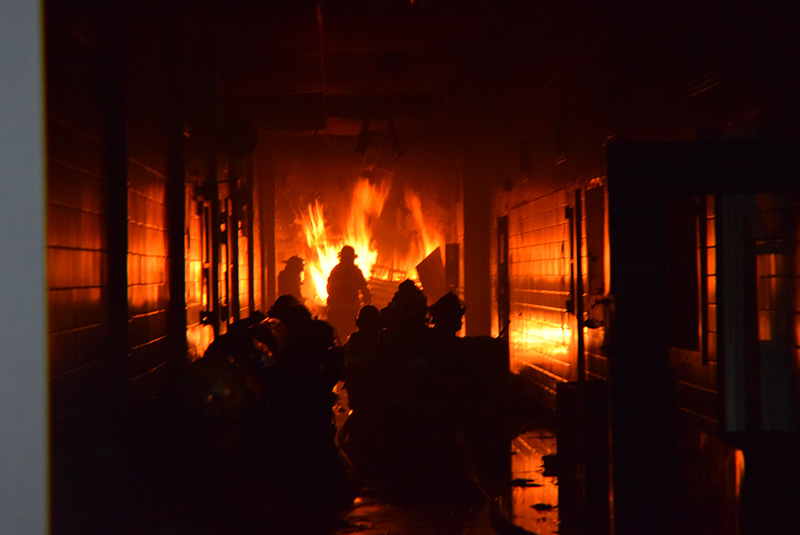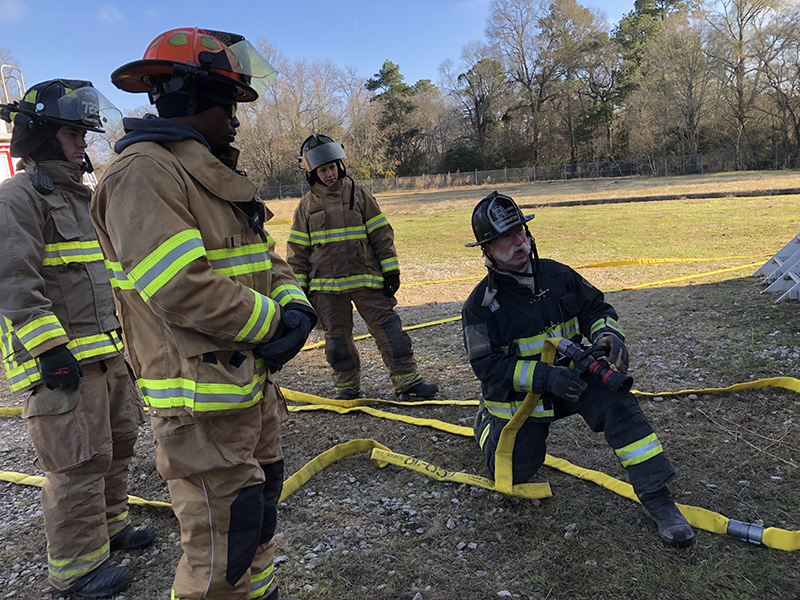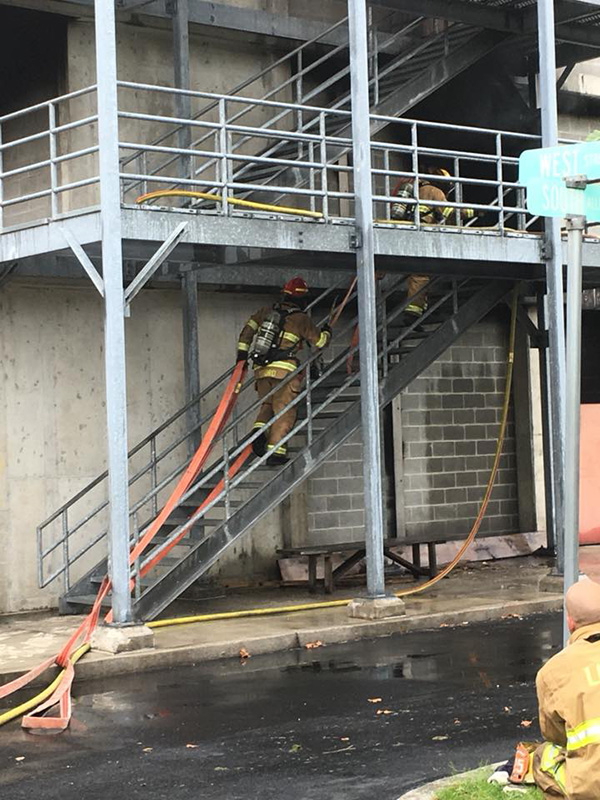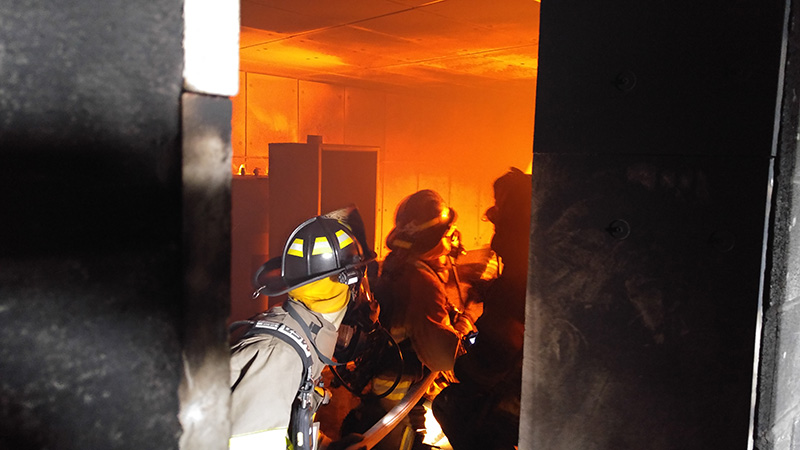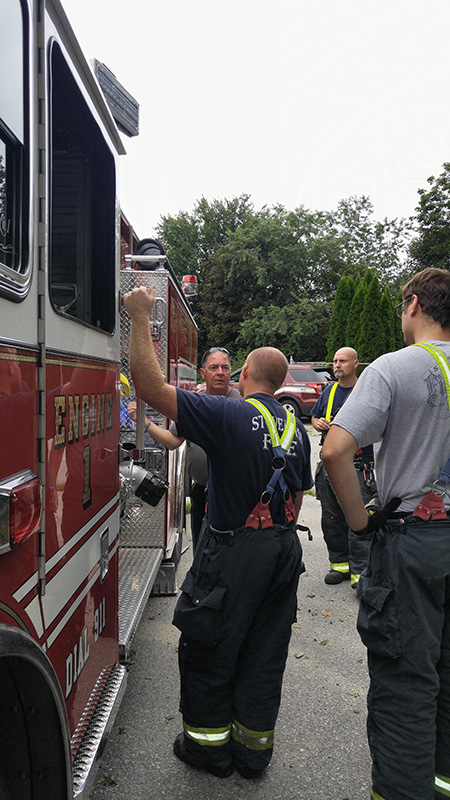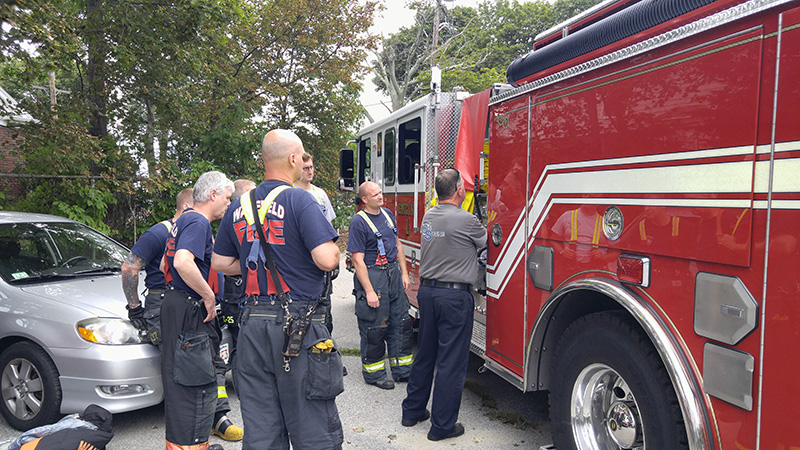- 609-743-0166 / East Coast | 208-993-0909 / West Coast
- This email address is being protected from spambots. You need JavaScript enabled to view it.

ENGINE COMPANY OPERATIONS
Our Engine Company Operations courses provide firefighters with proven and tested techniques for everyone from the probie to the company officer. Our staff combines years of nozzle time along with engine company command experience to strengthen any engine company’s knowledge and fireground performance.
General Course Duration Options
Interactive Lecture Only: Customized from 2 to 8 hours
Interactive Lecture & Hands On Training: 1, 1 1/2 or 2 day programs
Engine Company Operations Training
Course Type: Lecture, Hands On, or Lecture and Hands On Training
This course is designed to provide personnel with an evening lecture on basic engine company operations and an extensive day of hands-on evolutions. This includes hoseline deployment, hoseline advancing (1st floor, over ladders, rope raises, staircase advances), and nozzle practices. We present the common mistakes made by Engine Companies and ways to prevent them.
Engine / Truck Hands on Training
Course Type: Hands On Training
This course is designed to provide personnel with extensive hands-on evolutions that will include Engine Company operations such as basic pre-connected hoseline operations, 2 ½” hoseline operations, hose movement to upper floors, standpipe hook-ups and operations, extended hose stretches, multiple hoseline operations, and live fire attack as an operating engine company. The Truck Company portion of the course will include portable ladders, search techniques, ventilation / roof operations, vent, enter, search techniques, and several techniques for short-staffed crews.
Fire Apparatus Driver Training
Course Type: Lecture & Hands on Training
This course consists of 12 hours of lecture and Hands-On training. The lecture consists of an interactive power point and video presentation regarding the basics of laws pertaining to emergency vehicle operations in New Jersey, basic driver safety, minor preventative maintenance; apparatus check procedures, and basic vehicle driving operations. The hands-on driving portion of the training will consist of several structured driving scenarios to demonstrate competency in vehicle operations.
Fire Apparatus Pump Operations
Course Type: Lecture & Hands on Training
The 12 hour Fire Apparatus Pump Operations course combines both lecture and Hands-On training. The lecture portion includes an interactive power point and video presentation regarding the following; basic safety requirements, preventive maintenance, pump check procedures, basic pump operations. Additional topics include friction loss, pumping capacities, hydraulics, and static versus pressurized supply systems.
The hands-on pumping portion of the training consists of a variety pumping scenarios designed for crew members to demonstrate competency in pump operations, including skills to address the challenge of multiple hand lines, supply pumping, relay pumping, and drafting procedures.
Commercial Engine Operations
Course Type: Lecture & Hands on Training
This course provides personnel with a lecture on Engine Company tactics for Commercial building fires and an extensive day (or more) of hands-on evolutions. Hose loads for 2 1/4”, 2 1/2”, and 3″ lines as well as stretches, hoseline advancing and portable monitor drills are included in this program.
Engine Company Operations: Mastering the Fire Floor
Course Type: Lecture & Hands on Training
This course provides personnel with a lecture on today’s engine company operations and an extensive day (or more) of hands-on evolutions. This includes multiple hoseline deployments, hoseline advancing (1st floor, over ladders, rope raises, staircase advances), attack package review, and nozzle practices. This course can be modified to your department’s requirements.
The First Due Engineer
Course Type: Lecture & Hands on Training
Much has been written about the many tasks or positions associated with being first due: the fire-due engine company, the first handline, the first-due officer … the list goes on. Unfortunately, little has been written about the fire-due Engineer. The First Due Engineer course reviews various tasks that must be completed to ensure the success of the first arriving crews. Instructors will cover topics such as role and responsibilities, anticipating needs, training topics, and tasks not commonly considered by the Engineer. Also discussed, tips and tricks that senior Engineers have learned out over time to help support the fireground; beyond the hook up and look up that remains the focus of many departments.
Quick Drills for the Driver/Operator
Course Type: Lecture & Hands on Training
The role of the driver/operator is arguably one of the most important functions on the fireground. From safe transportation to and from the emergency scene to operating an engine or ladder truck at the scene of a multi-alarm fire, a competent and proficient driver/operator is critical to the overall success of the operation.
This interactive class includes several quick drills that can be done at the firehouse or in the response district. Drills range from 10-minute fireground hydraulic drills to complex troubleshooting of a fire pump, how and when to short-jack a tower ladder as well as positioning aerial master streams without personnel in the bucket. These drills incorporate relevant topics which students can share with their home fire departments.
Engine Company Operations

